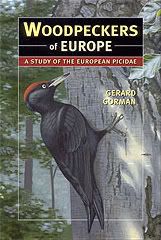Wednesday, 12 September 2007
Woodpecker signs: droppings
Finding and identifying woodpecker droppings is one of the great challenges that lovers of the Picidae face. Finding a woodpecker faeces sac in a forest is probably harder than finding the famous needle in a haystack. Woodpecker droppings quickly rot, whereas needles, made as they are from steel, last for ages. Green Woodpecker droppings are the only ones that are likely to be found with any regularity as this species often feed on lawns and areas with flat-cropped turf and so its droppings can be conspicuous, at least for a while. They are greyish, elongated, cylindrical and composed of invertebrate remains, often chitin, dried-out ant bodies and usually enclosed in a membrane, a sac. Such droppings are usually in piles at foraging sites or nearby, and may resemble soggy cigarette butts. They might be confused with small mammal droppings. Green Woodpecker droppings are most often found in winter, when birds do most of their foraging on anthills.
Subscribe to:
Post Comments (Atom)





No comments:
Post a Comment